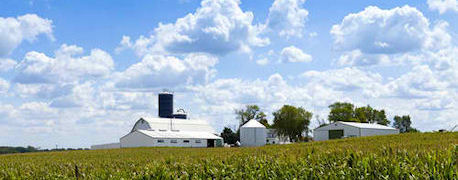
A fact of life in agriculture right now is that corn is around $3 per bushel with expected large carryout at the end of the 2014 marketing year.
Facts are only facts for as long as they last these days. That's to say the facts could change and corn prices could rise again, for reasons that may not even be apparent now. But until they do, reality is $3 corn. That means your crop budget may need a reality check heading into 2015.
We're going to provide all the help we can with features marked with "Crop Budget Guide 2015" tags beginning in the December issue of Indiana Prairie Farmer. You'll even find some budgeting help yet this week on this Website as featured local news.

Not every cost-cutting measure on the farm makes sense in the long run. It's time to create a crop budget for 2015.
My blog isn't counter to cutting – obviously we're offering advice to guide you. It's just making sure that what you cut doesn't turn around costing you more in the long run than it saves now.
Here are some places we wouldn't cut back if we were farming. Yes, easy to say when we're not 100% in the game as far as having dollars on the line.
Those who can farm, farm. Those who can't farm, write – well, maybe. But those who write sometimes get a good overall perspective because they talk to a number of people from different viewpoints.
5 things you shouldn't skip out on because corn prices are low
1. Soil conservation: It's the wrong time to say no to cover crops and jump of the soil health bandwagon, in our humble opinion. The benefits these practices can bring are just now starting to be documented. And soil health isn't something you can do and then not do, and then pick it up again. It's a continuous thing.
2. Support for your local farm group. Cutting out dues or travel and dropping out of groups that you are active in to save a few bucks could affect the industry in the long term and your mental and emotional health in the short term. There's a need to tell ag's story and for sharp leaders to provide guidance at the local, state and national level whether corn is $3, $5 or $10 per bushel.
3. Spending time with your family. So you let an employee go and make it up doing the work yourself to save money. That's OK if your relationship with your family doesn't suffer. When you pass from this world, no one will care whether you sold corn at $3 or $5 per bushel. Your family and kids will care if you spent time with them.
4. Spending time with your spouse. While you're spending time with your significant other, ask for their opinion on business and family matters. You don't have to paddle the canoe upstream alone. If two are paddling and looking for practical ways to stretch the budget, it's a lot more effective, and also less stressful.
5. Caring for your health. Cancelling your health insurance to save bucks could be tempting, but many have found it's a monumental mistake. Remember why you have insurance – to protect you from catastrophes. Yes, $3 corn is an obstacle in the road. By itself it isn't a catastrophe. A child getting a critical disease and running up a huge medical bill is gut-wrenching to anyone. If you also canceled your insurance, it's a catastrophe.
This may not be what you expected to read, but getting through a tight stretch financially involved more than deciding where to save a few bucks here and there.
About the Author(s)
You May Also Like




